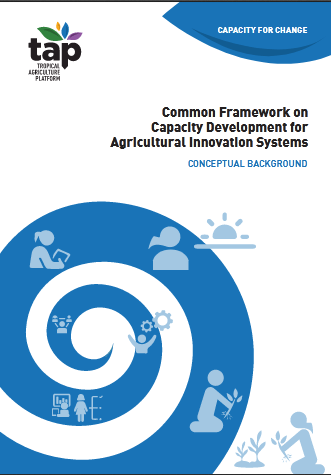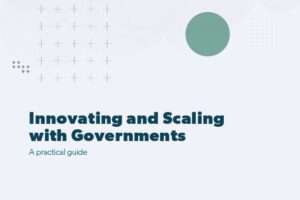The Tropical Agriculture Platform (TAP) is a G20 initiative with strategic goal of contributing to the development of national capacities for agricultural innovation in the tropics and the objective of enhancing “Capacity Development” (CD) in “Agricultural Innovation Systems” (AIS). As stated in the TAP “Theory of Change”, the “TAP capitalizes on and adds value to on-going initiatives by fostering greater coherence of capacity development interventions in tropical agriculture, strengthening interaction for more harmonized action and greater mutual accountability, and avoiding duplication”.
One of the first tasks of TAP is therefore to facilitate the emergence of a common language and a shared understanding of the scope of the challenge. Most countries and Development Partners (DP) use their own terminology and a lot of time is lost in trying to understand the exact meaning of the words used. A few examples: Are “capacity development”, “capacity strengthening” and “capacity building” synonymous? What is meant by “Agricultural Innovation Systems” (AIS)? Is there a general agreement on the three “levels” usually identified in the field of capacity development” (CD), i.e. individual, organisational and institutional/system? How are defined the CD recipients/targets for each of these levels? etc.
To reach their objectives, CD programmes must meet the needs of the target groups. Therefore, each DP and/or government/institution who wants to initiate such programmes must begin by “assessing the capacities in order to identify the CD needs” for the different target groups. Consequently, they both spend time and money to “assess
the capacities and CD needs” by developing methodologies and tools which may logically differ for the different “levels” and for the many types of recipient/target groups within them. The problem is that the methodologies and tools used often differ between DP, governments and institutions and CD interventions designed and implemented by DPs without prior needs assessments! Without a common understanding on how the “capacities and CD needs” are assessed, it is impossible to benchmark between and within countries, to increase coherence, and avoid duplication between CD activities supported by different DP, governments and institutions. In this context, a priority for TAP is to identify key metrics by which capacity can be measured – both quantity and quality – so as to conduct baseline assessments and then to measure long term CD improvements.
More and more the civil society makes governments or DP accountable for the investments made. The culture of “impact assessment” is now widespread and each institution launching or supporting CD activities has to demonstrate the impact of its programmes/ projects. They therefore are all struggling to develop methodologies and tools to assess the impact of “their” activities. As long as each institution attempts to assess the impact of “its” activities and does not work collectively to develop common methodologies and tools for a set of CD activities, whatever the institution carrying them out, the results will remain questionable and not comparable.





Add Comment